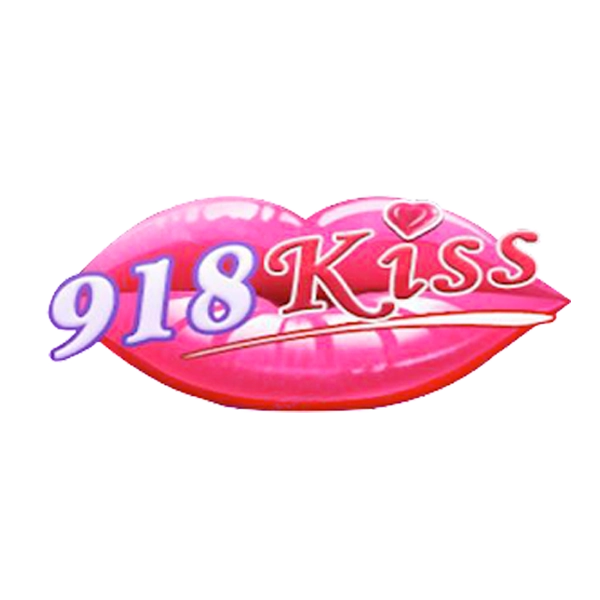



สล็อต666 ตอบโจทย์ทุกความสนุก รวบรวมค่ายเกมชั้นนำมากมาย เว็บตรง 100% รวมไปถึงเล่นจริงจ่ายได้ทุกยอด ไม่ต้องมากังวลใจอย่างแน่นอน เนื่องจากว่ามีมาตรฐานพร้อมที่จะตอบสนองได้ทั้งหมด เชื่อว่านักพนันชาวไทย สนใจการเล่นเกมพนันมากยิ่งขึ้น แต่กลับมีตัวเลือกของเว็บที่มั่นใจได้น้อยมาก ซึ่งการแนะนำเพิ่มเติม ช่วยให้ทุกคนพร้อมที่จะเลือกสรรและเข้าถึงบริการได้จริง slot666 เว็บตรง ใครที่สนใจการเล่นเกมพนันอยากจะให้ดูข้อมูล พร้อมกับรายละเอียดการให้บริการ แล้วจะเข้าใจว่าทำไมทุกวันนี้การเล่นเกมจึงกลายเป็นตัวเลือกที่ได้รับความสนใจ สล็อต และเลือกเว็บที่ให้บริการแบบไหนถึงจะไม่เสี่ยง ได้เงินจริงและมีความมั่นคงมากที่สุด
สล็อต666เว็บตรง มาพร้อมกับการบริการเกมมากมายหลากหลายค่าย ที่จะทำให้ผู้ที่เข้ามาร่วมสนุกภายใน เว็บสล็อต สามารถเข้าถึงได้ง่ายดาย ไม่ยุ่งยากจนเกินไปที่ทุกคนจะเข้าใจและเริ่มต้นทำเงินรางวัลได้จริงครบจบในเว็บเดียวแน่นอน ภายใน สล็อต666 ไม่ผ่านเอเย่นต์ไม่มีขั้นต่ำ และยังสามารถทำกำไรได้ทันที พร้อมระบบที่ทันสมัย ฝากถอน ไม่มีขั้นต่ำ หากคุณไม่มีบัญชีธนาคารก็สามารถเข้ามาปั่นสล็อตเว็บตรง ด้วยทรูวอเลทได้ทันที ทำรายการรวดเร็วทันใจอย่างแน่นอน ภายใน เว็บสล็อตแท้ แห่งนี้ สมัครสมาชิกและลุ้นรับเงินมากมายได้ทันที
สล็อตเว็บตรง เราคือผู้ให้บริการ เกมสล็อตออนไลน์ โดยไม่ผ่านตัวแทน เพิ่มโอกาสการเล่นสล็อตแตกง่าย ไม่มีการล็อคยูส พร้อมบริการทุกท่านผ่าน เว็บสล็อต อันดับ 1 สามารถเข้ามาร่วมสนุกได้ตลอดเวลา 24 ชั่วโมง พร้อมมีค่ายเกมมากมายให้เลือกเล่นได้อย่างเพลิดเพลิน ไม่ว่าจะเป็น PG SLOT เว็บตรง หรือค่ายต่างๆ สามารถเข้าถึงได้ทันที มาพร้อมระบบความปลอดภัยที่ดีที่สุด พร้อมลุ้นรับเงินรางวัลจากภายใน เว็บตรงแท้ที่มีมาตรฐานสูง เว็บแห่งนี้คือช่องทางการทำกำไรที่ง่ายที่สุด สมัครและทดลองเล่นได้ทันทีบน เว็บสล็อตใหม่ล่าสุด มั่นใจได้
ค่ายใหญ่มาแรงมากที่สุด ต้องเลือกเล่นเว็บที่มีคุณภาพอย่าง สล็อต เว็บตรงไม่ผ่านเอเย่นต์ มาพร้อมกับระบบออโต้ ทำรายการได้ตลอดเวลา โดยที่ไม่ผ่านเจ้าหน้าที่ เรียกได้ว่าสะดวกสบายเมื่อเข้ามาทำรายการบน เว็บสล็อต แห่งนี้ เพิ่มโอกาสทางการเล่นที่ แตกบ่อย ได้เงินจริง พร้อมสนุกได้ตลอดเวลาภายใน สล็อตเว็บตรงแตกหนัก สามารถเข้าถึงได้ทันที ไม่ต้องดาวน์โหลดอีกต่อไป แล้วคุณจะไม่ผิดหวัง

สล็อต666 มีบริการที่น่าสนใจ และช่วยในการยกกระดับการเล่นเกมพนันได้จริง เว็บสล็อตตรงไม่ผ่านเอเย่นต์ หลายคนสนใจและต้องการเล่นเกมพนันสล็อตเว็บตรง ฝาก-ถอน true wallet ไม่มีธนาคาร ไม่มีขั้นต่ำ แต่กลับไม่เข้าใจว่าเลือกเว็บพนันออนไลน์ที่ให้บริการแบบใด ถึงจะมีมาตรฐานเทียบเท่ากับทางต่างประเทศ นื่องจากว่าพื้นฐานทั้งหมด สล็อต เว็บตรงไม่ผ่านเอเย่นต์ไม่มีขั้น ทำให้การเล่นเกมพนันออนไลน์ และยิ่งเป็นประเภทของสล็อตมั่นใจ และส่งสัญญาณโดยตรง เรียกได้ว่าคุณภาพเกมพนันระดับโลกที่แท้จริง เว็บสล็อต PG ทั้งหมด หลายคนอาจจะมองเห็นว่ามีเว็บให้บริการมากมาย ซึ่งค่ายเกมแบบเดียวกับทั้งหมด เว็บตรง100% แต่ภายในและการส่งสัญญาณเกมกลับต่างกัน การส่งสัญญาณแบบตรงจากทางค่ายเกม สล็อต666 pg เว็บตรง ช่วยให้การเล่นเกมเพื่อทำเงินรางวัลง่ายและคุ้มค่ามากขึ้น แต่สำหรับเว็บทั่วไปจะเน้นการเข้าสมัครและไม่สามารถทำเงินรางวัลได้จริง ปั่นสล็อต PG SLOT AUTO อาจจะมาจากการให้บริการผ่านระบบตัวกลาง เพราะฉะนั้นเล่นเกมพนันออนไลน์ ต้องเลือกใช้งาน เว็บตรงไม่ผ่านเอเย่นต์เท่านั้น
สล็อต666 จะเน้นการเข้าถึงและหลากหลาย ไม่ต้องมีเงงินทุนมากมาย เว็บตรง 100% อิสระทางการเงิน พร้อมที่จะทำรายการได้ทั้งหมด เว็บสล็อต666 เนื่องจากว่านักพนันที่เพิ่งจะสนใจ เมื่อเข้ามาใช้งานจะมีแรงกดดันของเงินทุน ซึ่งการให้อิสรและไม่มีการจำกัด ช่วยเปิดประสบการณ์ได้จริง เว็บสล็อตใหม่ล่าสุด แต่แลกมากกับระบบที่ทันสมัย ทุกอย่างนักพนันจะต้องทำรายการด้วยตัวเองทั้งหมด สล็อตเว็บตรง ฝาก-ถอน true wallet ไม่มีขั้นต่ำ ไม่ต้องกังวลใจไปเนื่องจากว่า ทางเว็บมีการเพิ่มเติมรายละเอียด PG wallet รวมไปถึงขั้นตอนการแนะนำที่ชัดเจน ช่วยให้การเริ่มต้นไม่ยุ่งยาก แต่กลับง่ายและทุกคนพร้อมที่จะทำรายการด้วยตัวเอง ยิ่งไปกว่านั้นเริ่มต้นที่ 1 บาท Slot wallet แต่กลับลุ้นเงินรางวัลก้อนโต ไม่ว่าจะทำเงินรางวัลได้เท่าไหร่ สล็อต PG เว็บตรงแตกหนัก ทางเว็บการันตีจ่ายได้ทั้งหมดตามจริง ทุกคนได้รับความคุ้มค่ากลับออกไปแน่นอน เว็บสล็อตวอเลท เล่นเกมพนันคุณภาพจากเว็บตรงที่แท้จริง สนุกและทำเงินรางวัลก้อนโต
สล็อตเว็บตรงแม้ผู้ไม่มีประสบการณ์ ไม่เคยเล่นเกมพนัน สล็อต666 จะมาแนะนำว่าค่ายเกม มีความน่าสนใจและมีความสำคัญอย่างไร เนื่องจากว่าเว็บที่ดีจะมีการนำค่ายเกมที่โดดเด่นมาให้บริการมากมาย สล็อตเว็บตรง 100% และมั่นใจว่าสิ่งเหล่านี้ จะช่วยให้นักพนันเจอกับความสนุกและเงินรางวัลที่ต้องการได้อีกด้วย เกมลิขสิทธิ์แท้กับเว็บตรงไม่ผ่านเอเย่นต์

ค่ายเกมอันดับที่ 1 ของนักพนันชาวไทย RTP เกิน 90% เล่นง่ายภาพสวยมาก ช่วยให้การเริ่มต้นทำเงินรางวัลก้อนโต ถือว่าค่ายแห่งนี้มีจุดเด่นที่หลากหลาย และตอบสนองความคุ้มค่าได้จริง

ค่ายที่มีการรวบรวมเกมพนันสล็อตยอดนิยมไว้บริการ แตกบ่อย โดยใจนักพนันชาวไทยรุ่นใหม่ และ สล็อต 666 ยังมีมาตรฐานพร้อมที่จะตอบสนองให้กับนักพนันทุกคน

เว็บสล็อตใหม่ล่าสุด บริการเกมสล็อตมาใหม่และมาแรง ปลอดภัย มีภาพที่สวยงามไม่ซ้ำใคร ช่วยให้เกมพนันสล็อต แตกต่างและคุ้มค่ามากขึ้น รวมไปถึงมีมาตรฐานการันตีจากทางประเทศฟิลิปปินส์

เว็บสล็อตแท้ เจ้าใหญ่ส่งสัญญาณจากทางยุโรป ใครที่เน้นระดับโลกและมีเงินรางวัลก้อนโต แนะนำว่า สล็อต666 ค่ายแห่งนี้พร้อมที่จะตอบสนองได้ครบจบในค่ายเดียว

สล็อตเว็บตรงไม่ผ่านเอเย่นต์ ไม่มี ขั้นต่ำ เล่นได้ง่ายและไม่ยุ่งยาก ทรูวอเลทเจ้าใหญ่จากทางเอเชีย ค่ายแห่งนี้มีดีและตัวเลือกที่มากมาย เหมาะสมกับนักพนันรุ่นใหม่ที่ต้องการเริ่มต้นเส้นทางเหล่านี้

ค่ายเกมที่มีการลุ้นเงินรางวัลที่มากมายและหลากหลาย เว็บสล็อต อันดับ 1 มีตัวเกมที่ทันสมัยช่วยเพิ่มเติมความคุ้มค่า ค่ายที่มีรอบฟรีเกมโบนัสรวมไปถึงแจ็คพอต ครบจบในค่ายเกมเดียว

เว็บตรงสล็อต มีข้อดีที่จะทำให้นักพนันตัดสินใจเลือกใช้บริการ สล็อต666 ได้อย่างมั่นใจ เนื่องจากว่านักพนันรุ่นใหม่ มีความสงสัยและไม่มีข้อมูลทั้งหมด สล็อตเว็บตรง แตกง่าย การเติมเต็มและทำความเข้าใจได้จริง ช่วยเปิดประสบการณ์และเลือกสรรสิ่งที่นักพนันสนใจ ไม่ต้องเสี่ยง ปั่นสล็อตเว็บตรง หรือว่าทำความเข้าใจมากมาย ทุกอย่างตอบสนองได้อย่างตรงใจแล้วทั้งหมด รับรองว่าเว็บตรงคือคำตอบที่นักพนันตามหา
คำว่าระดับโลกและเครือเดียวกับเจ้าใหญ่ของวงการเกมพนัน สล็อตเว็บตรงไม่ผ่านเอเย่นต์ ช่วยให้นักพนันที่ไม่มีประสบการณ์ พร้อมที่จะเลือกสรรและใช้งานได้อย่างมั่นใจ เนื่องจากว่าทั่วโลกมีการเล่นเกมพนันเพื่อทำเงินรางวัลมากมาย และการขยายเข้ามาช่วยให้นักพนันมั่นใจและเลือกสรรได้ทันที
การพัฒนาและยกระดับบริการ เว็บสล็อต PG ช่วยให้นักพนันทุกคนมีอิสระมากขึ้น การลงทุนกับทีมงานที่ต้องมีประสบการณ์สูง แลกมากับบริการที่ใช้งานได้ง่าย ถึงแม้ว่านักพนันจะไม่เคยใช้งานมาก่อน เรียกได้ว่าระบบที่ทันสมัย ทำให้การเล่นเกมพนันง่ายและเข้าถึงทุกคนได้ตลอดเวลา
รู้ถึงความต้องการ และการจัดสรรมาเติมเต็ม เนื่องจากว่าเกมพนันแต่ละค่าย จะมีจุดเด่นและความน่าสนใจต่างกัน และนักพนันชาวไทยต้องการแบบที่เรียกว่า ต่างกับนักพนันทั่วโลก PG SLOT เว็บตรง การตอบสนองได้อย่างตรงใจมากกว่า ยิ่งทำให้นักพนันสนุกและทำเงินรางวัลได้มากมายได้จริง
เว็ปตรงมีการพัฒนาและออกแบบ สล็อต666 จะช่วยให้ หน้าเว็บเพิ่มเติมความแตกต่างและน่าสนใจมากขึ้น ถ้าจะเลือกเว็บที่ให้บริการเกมพนัน อยากจะให้นักพนันใส่ใจทุกรายละเอียด เว็บสล็อตตรง เพื่อที่จะสังเกตว่าเว็บเหล่านั้นพร้อมที่จะตอบสนองได้จริง เว็บตรงไม่ผ่านเอเย่นต์ 1 บาท ก็ถอนได้ หน้าเว็บอาจจะคล้ายกันแต่ถ้าแตกต่างและดูทันสมัย รวมไปถึงมีรายละเอียดที่มากขึ้น กราฟิกที่ใส่ใจ ยิ่งทำให้เว็บแห่งนั้น โดดเด่นและมีความน่าสนใจมากขึ้น เพราะว่ายิ่งมีการพัฒนา ปั่นสล็อต บอกได้ถึงมาตรฐานของเงินทุนที่ลงไป ยิ่งกล้าที่จะก้าวไปมากกว่า ยิ่งเพิ่มเติมความมั่นใจได้อย่างแท้จริง ภาพรวมของบริการผ่านทางหน้าเว็บทันสมัย สล็อตเว็บตรง แตกง่าย ใช้งานได้ง่ายและดูน่าสนใจ เพื่อให้นักพนันรุ่นใหม่เข้ามาใช้งาน เกิดความประทับใจได้มากที่สุด เว็บเกมพนันที่ใส่ใจทุกรายละเอียด เพื่อให้ทุกคนเข้าถึงและเกิดความประทับใจอย่างแท้จริง

โดดเด่นและกลายมาเป็นไฮไลท์ สล็อต666 กับทางค่ายเกม PG SLOT หลายคนไม่เคยเล่นอาจจะมีข้อสงสัยมากมาย เว็บตรงไม่ผ่านเอเย่นต์ ทำไมค่ายแห่งนี้ ถึงได้รับความสนใจมากที่สุด จะบอกนักพนันแบบนี้ว่า เกมสล็อต PG ทางค่ายมีธีมที่สวยงามหลากหลาย ช่วยให้เกมพนันที่ง่ายและไม่ยุ่งยาก SLOT เว็บตรงที่ดี เพิ่มเติมความพิเศษได้โดนใจ และจำนวนของเกมที่ให้บริการมากกว่า 120 เกม เว็บสล็อต PG ในเวลานี้ กล้าที่จะบอกว่าทุกธีมที่ให้บริการ พร้อมแล้วที่จะเติมเต็มความสนุกและเงินรางวัลก้อนโต ทำให้ค่ายแห่งนี้กลายเป็นที่ 1 ของนักพนันชาวไทยตลอดมา สล็อตเว็บตรง แตกง่าย ถ้าอยากจะเล่นเกมพนันที่น่าสนใจแบบนี้ และไม่ต้องมากังวลใจว่าทำเงินรางวัลได้หรือไม่ เว็บตรงไม่ผ่านเอเย่นต์แห่งนี้ สล็อตเว็บตรงแตกหนักพร้อมแล้วที่จะตอบสนองทุกความต้องการ เงินรางวัลที่มากมายทำได้ตามที่นักพนันต้องการ
สล็อต666 กับบริการที่โดนใจนักพนันชาวไทยทุกคน สล็อตเว็บตรง แตกง่าย ไม่มีขั้นต่ำ ไม่ว่าจะเคยใช้บริการมาก่อนหรือไม่ พร้อมที่จะเปิดประสบการณ์ เล่นเกมพนันที่สนใจ สล็อต PG เว็บตรง แตกหนัก และทำเงินรางวัลได้ตามจริง แต่ทว่าอยากจะมาแนะนำเรื่องของ สล็อตเว็บตรง อันดับ 1การเริ่มต้นทุกอย่างจะต้องทำรายการด้วยตัวเอง ผ่านทางหน้าเว็บไซต์เท่านั้น เว็บสล็อตใหม่ล่าสุด ไม่มีการทำรายการให้อย่างเด็ดขาด เพราะว่าทางเว็บมั่นใจว่า การพัฒนาและออกแบบระบบมีขั้นตอนที่ง่ายไม่ยุ่งยาก ซึ่งส่งผลดีกับการเล่นเกมพนันของทุกคน PG SLOT เว็บตรง แต่อย่าลืมว่าเว็บสล็อต666 มีมาตรฐานที่ชัดเจน การให้ข้อมูลส่วนตัวทั้งหมด ควรที่จะเป็นความจริงเพื่อที่จะยืนยันตัวตน รับรองว่าทุกข้อมูลจะถูกเก็บรักษาความดี ไม่หลุดไปยังบุคคลอื่นแน่นอน สล็อตเว็บตรง ฝาก-ถอน true wallet ไม่มีธนาคาร ไม่มีขั้นต่ำ แล้วจะรู้ว่าเว็บเกมพนันคุณภาพ มีมาตรฐานบริการที่หลากหลาย โปรโมชั่นสุดคุ้มค่ากับเงื่อนไขการให้บริการที่ไม่ยุ่งยาก
ตอบ: นักเดิมพันเลือกเดิมพันบน เว็บสล็อตตรง ไม่ผ่านเอเย่นต์ เป็นการตัดสินใจที่ดีที่สุด เพราะถ้าจะพูดถึงความมั่นใจแล้ว เว็บตรงสามารถที่จะตอบสนองมาตรฐานและบริการได้ทั้งหมด ไม่มีโกง ไม่มีล็อคยูส
ตอบ: ทุกเกมบนค่าย PG SLOT เป็นเกมที่ผ่านการจัดทำและคัดมรรมาเฉพาะสล็อต PG เว็บตรง แตกหนัก โดยทางค่ายเกมอย่าง PG มีจุดเด่นที่มากมายและเน้นการเข้ารางวัลแบบง่าย จึงได้กลายเป็นที่นิยมสูง
ตอบ: ข้อดีที่เดิมพันกับเว็บตรงมีมากมาย ไม่ว่าจะเป็นการซื่อสัตย์ต่อลูกค้า หรือฐานะทางการเงินที่มั่นคง ภาพรวมของการใช้บริการผ่านทางเว็บตรง มีมาตรฐาน เน้นบริการและทำเงินรางวัลได้จริงไม่มีการโกง